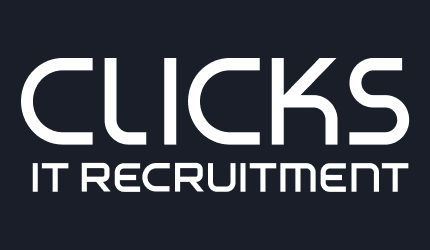And Attract Top Talent
A good hire starts with writing a good position description. In the same way that employers gain insights about job seekers through CVs, job seekers gather information about prospective employers through position descriptions (PDs). According to Clicks’ latest IT Recruitment & Retention Report, employers have reported fewer rejections for job offers over the last year, however, hiring managers should be wary that this number is still above the 10 year average. This increase correlates to factors relating to changes in work practices over the past few years, including a greater demand for work/life balance.
If you are planning to hire – and attract the best candidates – take a look at our top tips to writing a great position description.
Before You Start
Some quick best-practice housekeeping rules:
- When hiring for a position with an existing PD, always review it with fresh eyes first. Be tough: if the document is not working hard to sell your organisation and the opportunity, be prepared to re-write it.
- Use plain English.
- Be succinct. If you can’t fit everything into 2-3 pages, you’re trying to squeeze too much into it.
- Write with your intended audience in mind. This document is your chance to attract a high-impact individual. How can you describe this role in a way that will resonate with them?
- Use gender-neutral, inclusive language.
- Structure the document into clear headings. If possible, include the expected percentage of time each set of duties is expected to take. This will help the reader accurately picture themselves in the role on a day-to-day basis, thereby increasing their engagement.
Inspire and Provide a ‘Why’
A job seeker with all the right skills and experience still needs to be motivated and engaged to be successful. Notwithstanding management style, company culture, and team environment, an organisation’s purpose is increasingly important to attract and motivate top talent. High calibre job seekers are discerning, and always have more than one potential job prospect. A clearly articulated vision, values, diversity or social impact statement may be the difference between them choosing your offer over another organisation’s.
It is often reported that millennials work for purpose. However, it is argued that every generation wants meaningful work. Having experienced a global pandemic, many in a position to do so are reassessing their work to seek greater fulfilment. That is why it is important for PDs to include both a company overview and a position overview.
The company overview should succinctly explain your organisation’s history, success, goals, mission statement, culture and Employer Value Proposition. That is, it should communicate to prospective employees where you have been, what you have achieved, what you hope for the future, and the culture, values, and key initiatives that will help you get there. It should be inspiring to read and avoid company jargon.
The position overview should explain how the position supports the organisation’s purpose, the reporting lines, and the team. It provides a link between the role and company’s goals; context about the environment the role will operate within including the team members and environment; the key people the role will interact with; as well as the unique challenges and opportunities about the environment and role.

Be Clear
A well-crafted PD should leave job seekers (potential employees) with a clear idea of what a typical day or week will look like. That starts with a clear position title. Avoid internally-focused titles that aren’t readily understandable to external audiences. The PD should also provide clarity on the scope of responsibility, areas of accountability, and what success looks like.
Job seekers spend an exhaustive amount of time preparing their applications and for interviews, often basing their efforts on the position description. It is therefore important to the process (and in turn will help your recruitment outcome) to provide clear and accurate information.

Be Specific and Realistic about Requirements
There is a difference between the role requirements and the person requirements. Both are equally important. As we all know, to carry out any role successfully requires the right combination of skills, experience, and personal attributes. Let’s take a closer look at each of these.
Skills
When determining which skills to include, it is important to capture the essential skills only. While ‘nice to have’ requirements can be discussed with your recruitment partner, a PD is not a place for a wish list. The only skills listed should be those that enable the successful candidate to carry out their responsibilities. This approach will greatly broaden your applicant field, and incorporate those wonderful ‘left field’ candidates who have the desired skills, but have gained them in an unexpected role or industry.
If you have more than six key skills required, you are likely venturing into wish list territory.
Experience
Employers often make the mistake of listing an ideal or minimum number of years’ experience. Not only is this approach discriminatory, it is riddled with assumptions. The assumption is that years worked in different organisations will equate to the same challenges, pressures, learnings, and experience. Would you rather hire someone who has been a mediocre performer in the same role for the last ten years, or an up-and-coming high achiever with five years’ experience? I know which one I’d choose.
Personal attributes
Whether it’s strong attention to detail, an affinity for efficiency, or strategic thinking, calling out personal attributes is a great way for candidates to identify with roles that will maintain their interest over an extended period (or help them self-select out of roles). Don’t forgot to build these into your recruitment and selection process!

Some Other Things to Consider
The tips mentioned above are the 101 basics you should be nailing with your PDs. Other considerations are to include links to additional resources:
- Describing your employee benefits program, flexible work opportunities, development, training, and/or career opportunities
- Having a dedicated section to showcase your company culture
- Videos of current employees: a ‘day in the life’, or ‘what I love about working here’
- Internal initiatives on diversity, social impact, environmental impact management, corporate social responsibility
- Awards you’ve won
Employees are an organisation’s greatest asset. Yet the time, money, and effort spent on marketing and communicating with them compared to prospective customers is often grossly askew. If you or your HR team require support to create and design a position description, please get in touch. For any hiring needs, please reach out to your Clicks Account Manager or 1300 CLICKS for a confidential discussion.
Clicks is an award-winning IT recruitment specialist. Our recruiters average 12 years of industry experience, and we’re on over 80 Preferred Supplier Agreements. As Australia’s favourite IT recruiters, we can help you find top talent, fast!









